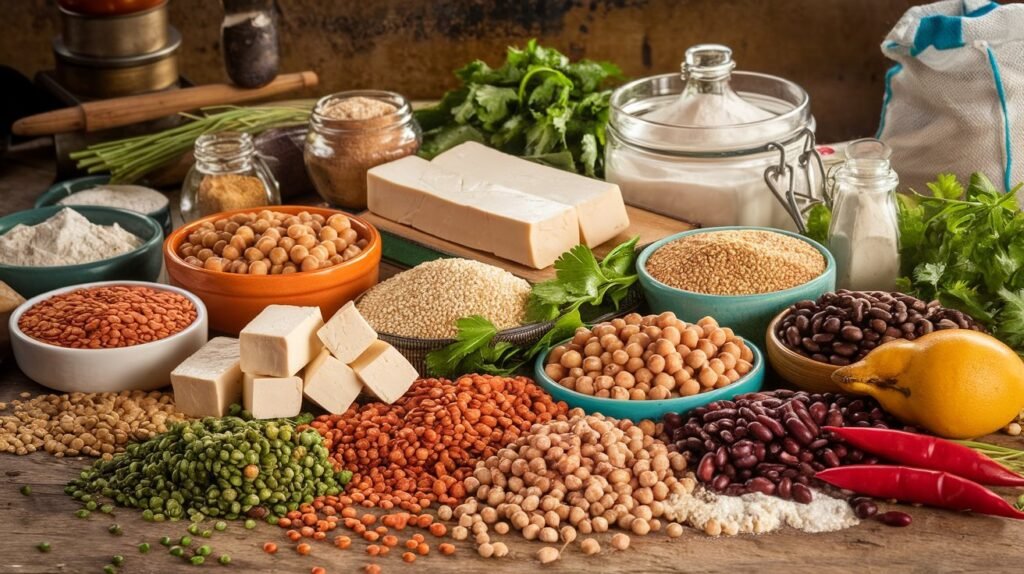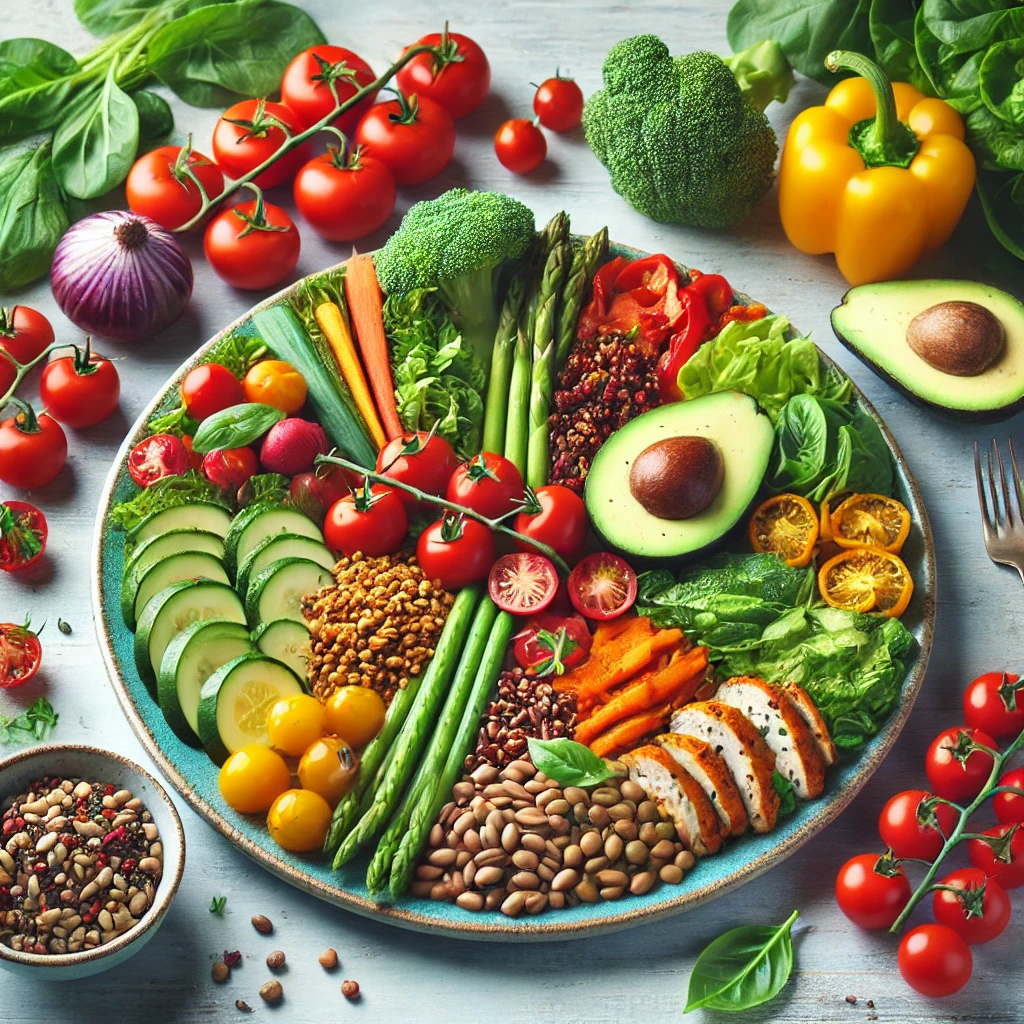In today’s world, people are becoming more health-conscious and environmentally aware. As a result, the flexitarian diet is gaining popularity for its balance between plant-based foods and occasional meat consumption. This diet allows individuals to benefit from the nutrients in plants and animal products without the strict restrictions of vegan meal plans. If you’re curious about adopting a healthier, more sustainable way of eating, the flexitarian diet might be the perfect choice for you.
Table of Contents
What is the Flexitarian Diet?
The term “flexitarian” is a combination of “flexible” and “vegetarian.” It refers to a flexible eating pattern that emphasizes plant-based foods while allowing occasional meat and animal products. This diet is more lenient than traditional vegetarian or vegan diets, making it a more achievable lifestyle for many.
Unlike diets that are fully vegetarian or vegan, the flexitarian diet offers more flexibility. You don’t have to eliminate entire food groups, but instead, you prioritize plant-based foods while still enjoying meat and other animal products in moderation. This balanced approach provides numerous health benefits while being more adaptable to individual preferences and needs.

Flexitarian Diet at a Glance:
| Food Type | Frequency | Examples |
|---|---|---|
| Plant-based foods | Daily | Vegetables, fruits, legumes, whole grains |
| Animal products | Occasionally | Poultry, fish, eggs, dairy |
| Red meat | Sparingly | Beef, pork, lamb |
The Flexitarian Diet and Its Health Benefits
1. Weight Management
One of the primary reasons many people adopt the flexitarian diet is its ability to promote weight loss and management. Research suggests that diets rich in plant-based foods are often lower in calories and higher in fiber, helping to control hunger and reduce overall calorie intake. Studies show that people who follow plant-based diets, including flexitarianism, tend to have lower body mass indexes (BMI) than those who consume high amounts of animal products.
A 2015 study published in the Journal of General Internal Medicine found that participants following vegetarian or semi-vegetarian diets experienced greater weight loss than omnivorous diets. The flexible approach, with its emphasis on plant-based eating, can help people shed unwanted pounds while still enjoying occasional indulgences.
2. Improved Heart Health
Plant-based foods are naturally low in cholesterol and saturated fat, making them heart-healthy choices. By reducing your intake of animal products, especially red meat, you can significantly lower your risk of heart disease, high blood pressure, and elevated cholesterol levels. Flexitarians also consume more fiber, antioxidants, and healthy fats from sources such as nuts, seeds, and olive oil, which further contribute to cardiovascular health.
According to a study published in the American Journal of Clinical Nutrition, individuals who adhered to a semi-vegetarian diet experienced a 32% reduced risk of heart disease compared to those who consumed high amounts of meat.
3. Lower Risk of Type 2 Diabetes
Type 2 diabetes is a growing health concern worldwide, and diet plays a critical role in its prevention and management. Flexitarian diets that focus on plant-based, whole foods help regulate blood sugar levels and reduce the risk of developing type 2 diabetes. The fiber from fruits, vegetables, and whole grains slows down digestion and helps prevent spikes in blood sugar.
A study published in the British Journal of Nutrition found that semi-vegetarian diets were associated with a 23% lower risk of developing type 2 diabetes compared to non-vegetarian diets.
4. Environmentally Friendly
The environmental impact of meat production is significant, contributing to greenhouse gas emissions, deforestation, and water usage. By reducing meat consumption and focusing on plant-based foods, the flexitarian diet promotes sustainability. Even small reductions in meat intake can lead to a decrease in your carbon footprint, making this diet not only good for your health but also for the planet.
5. Reduced Cancer Risk
Plant-based diets have been associated with a lower risk of certain types of cancer, particularly colorectal cancer. Consuming more fruits, vegetables, and legumes, which are rich in antioxidants and phytochemicals, helps protect cells from damage that can lead to cancer. The flexitarian diet’s emphasis on plant-based foods, combined with a reduction in red and processed meat intake, contributes to cancer prevention.
A comprehensive analysis published in the Journal of the American Medical Association found that semi-vegetarians had a lower risk of colorectal cancer compared to heavy meat eaters.
How to Start a Flexitarian Diet
Adopting a flexitarian diet doesn’t require a drastic overhaul of your current eating habits. Instead, it’s about gradually incorporating more plant-based meals and reducing your consumption of meat. Here’s how to get started:
1. Embrace Meatless Days
Start by designating specific days as “meatless,” where you focus solely on plant-based meals. This could be as simple as having “Meatless Mondays” or incorporating two or three vegetarian meals per week. As you become more comfortable with plant-based cooking, you can increase the frequency of meatless meals.
2. Explore Plant-Based Protein Sources

Protein is essential for muscle repair, energy, and overall health. While meat is a common protein source, there are plenty of plant-based alternatives that provide the same benefits without the added saturated fat and cholesterol. Some excellent plant-based protein sources include:
- Lentils
- Chickpeas
- Quinoa
- Tofu
- Tempeh
- Edamame
- Nuts and seeds
3. Make Small Substitutions
Instead of completely eliminating meat from your diet, start by reducing portion sizes or substituting plant-based proteins in certain meals. For example, you can replace half of the meat in a stir-fry with tofu or swap ground beef for lentils in a taco recipe.
4. Focus on Whole, Unprocessed Foods
The flexitarian diet encourages the consumption of whole foods such as fruits, vegetables, legumes, and whole grains. These foods are rich in nutrients and provide essential vitamins, minerals, and fiber. Try to limit processed and packaged foods, as they are often high in sugar, unhealthy fats, and sodium.

Sample Flexitarian Meal Plan
To give you an idea of what a flexitarian diet looks like, here’s a simple three-day meal plan that balances plant-based and occasional meat options.
Day 1:
- Breakfast: Oatmeal with almond milk, berries, and chia seeds
- Lunch: Quinoa salad with chickpeas, avocado, and mixed greens
- Dinner: Grilled salmon with roasted vegetables and brown rice
Day 2:
- Breakfast: Smoothie with spinach, banana, almond butter, and plant-based protein powder
- Lunch: Lentil soup with a side of whole-grain bread
- Dinner: Stir-fried tofu with broccoli, carrots, and quinoa
Day 3:
- Breakfast: Greek yogurt with mixed fruit and flaxseeds
- Lunch: Veggie burger on a whole-wheat bun with sweet potato fries
- Dinner: Chicken stir-fry with bell peppers, zucchini, and brown rice
Flexitarian Diet vs. Other Diets
The flexitarian diet stands out from other popular diets because of its flexibility. Here’s how it compares to vegetarianism, veganism, and omnivorous diets.
| Aspect | Flexitarian | Vegetarian | Vegan | Omnivorous |
|---|---|---|---|---|
| Meat consumption | Occasionally | None | None | Regular |
| Focus on plants | High | High | High | Moderate |
| Flexibility | High | Moderate | Low | High |
| Sustainability | Moderate to high | High | High | Low to moderate |
| Weight management | Effective | Effective | Effective | Variable |
Challenges of a Flexitarian Diet
While the flexitarian diet is generally easier to follow than stricter diets, there are still some challenges to consider.
1. Potential Nutrient Deficiencies
Since the diet reduces meat consumption, it’s essential to ensure you’re getting enough essential nutrients like vitamin B12, iron, and omega-3 fatty acids. These nutrients are typically found in animal products, so you may need to incorporate fortified foods or supplements into your diet.
2. Social and Cultural Factors
In some cultures or social settings, meat is a central part of the meal. Navigating these situations can be challenging if you’re trying to follow a flexitarian diet. However, the flexibility of the diet allows you to enjoy occasional meals with meat without straying from your overall eating plan.
3. Finding Balance
It’s important to strike the right balance between plant-based foods and animal products. Over-relying on processed vegetarian alternatives or indulging in too much meat can offset the health benefits of the diet. Focus on whole, nutrient-dense foods for the best results.
Conclusion
The flexitarian diet offers a balanced approach to healthy eating that is both sustainable and adaptable. By emphasizing plant-based foods while allowing occasional meat consumption, this diet provides numerous health benefits, including weight management, improved heart health, and a reduced risk of chronic diseases. It’s also environmentally friendly, making it a great choice for those looking to reduce their carbon footprint. Whether you’re looking to improve your health or make more sustainable food choices, the flexitarian diet is a flexible and effective way to achieve your goals.
References
- Journal of General Internal Medicine, 2015: Vegetarian Diets and Weight Loss
- American Journal of Clinical Nutrition: Semi-Vegetarian Diet and Heart Health
- British Journal of Nutrition: Plant-Based Diets and Diabetes Risk
- Journal of the American Medical Association: Cancer Risk and Vegetarian Diets




